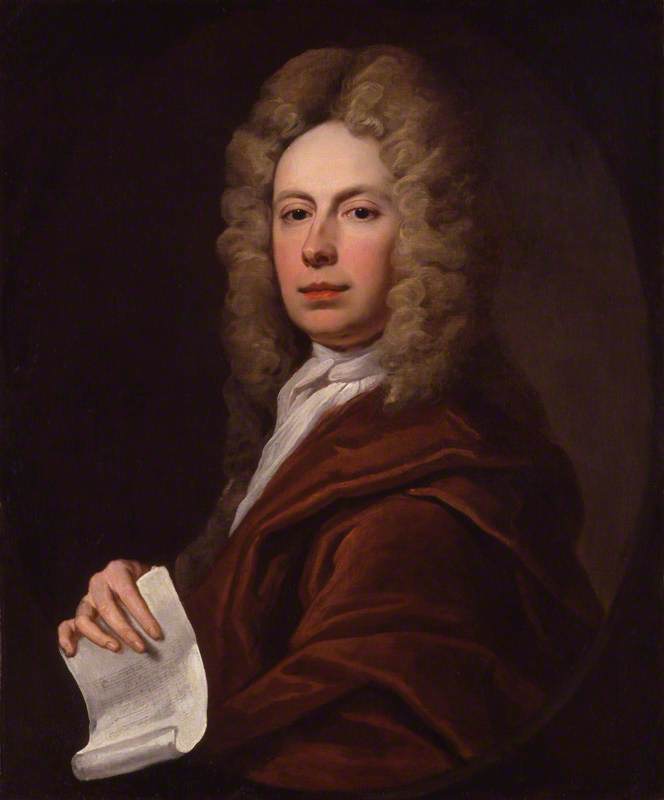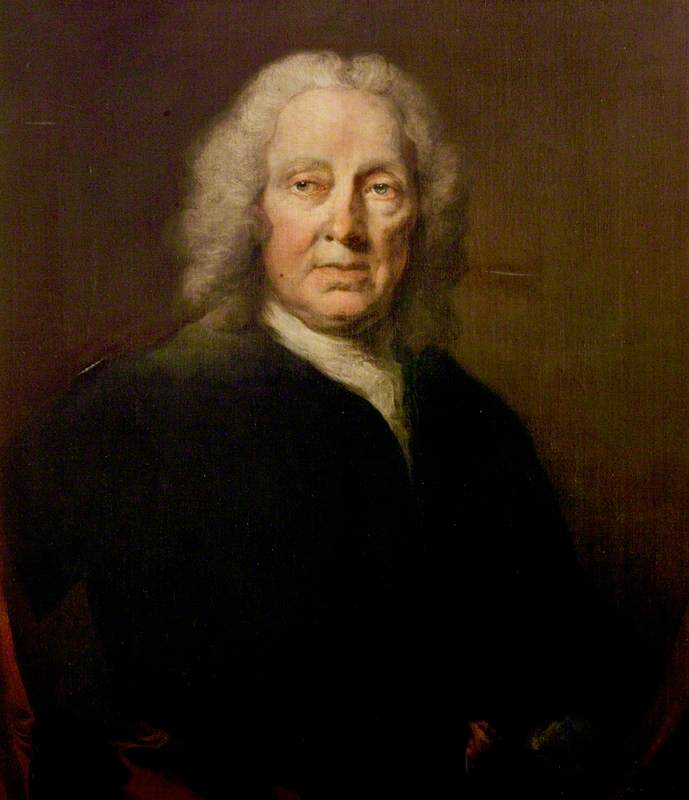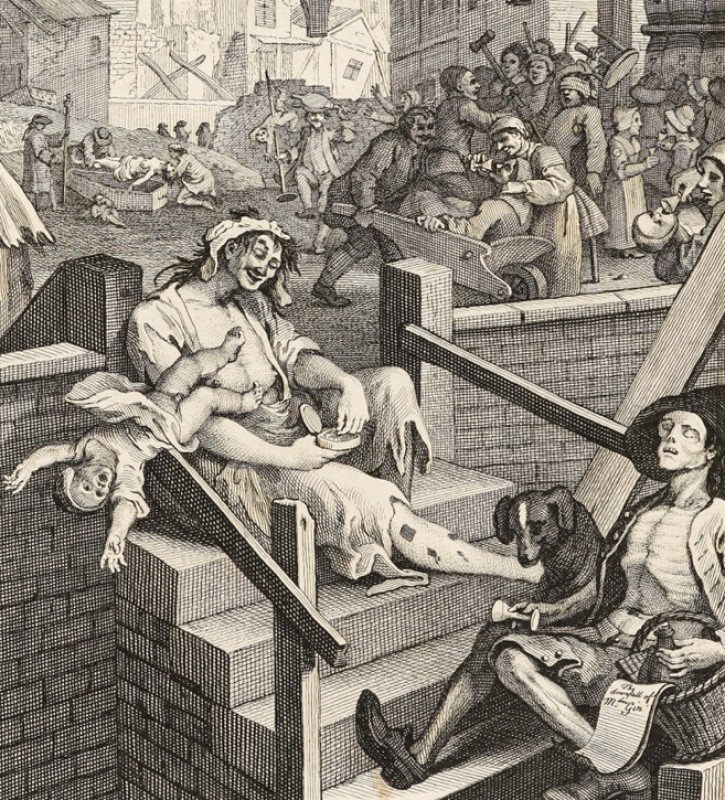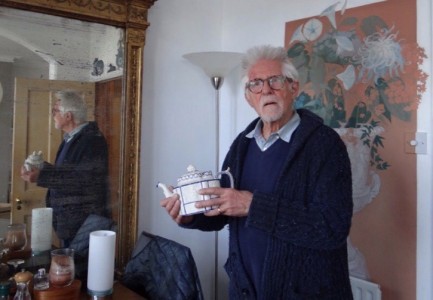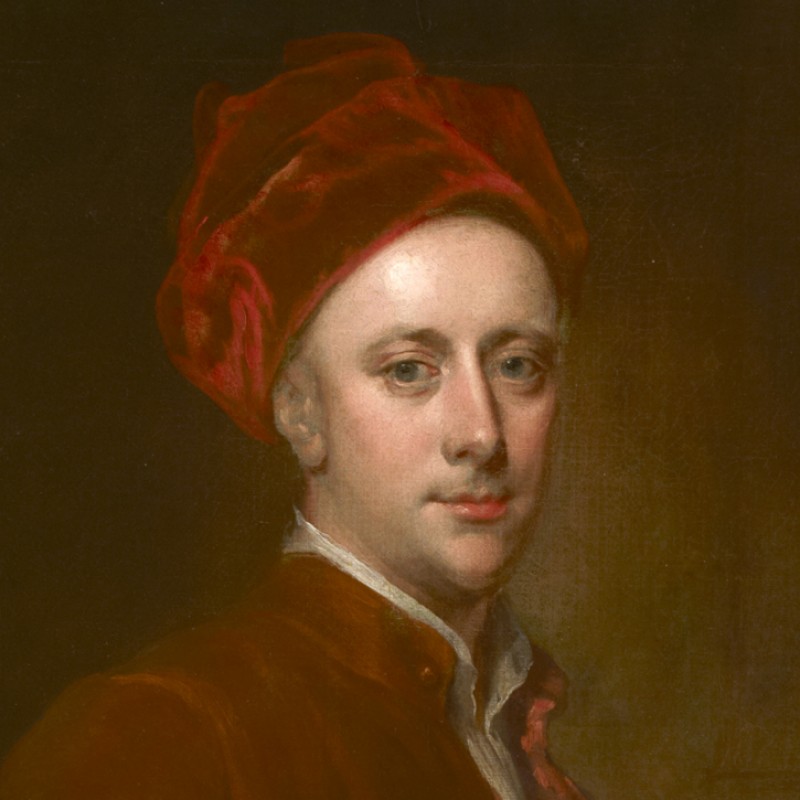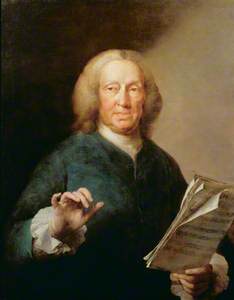Richard Leveridge (1670–1758) was a bass singer and composer who sang for both Purcell and Handel and was a popular performer on the London stage for over 50 years. He is unusual among early eighteenth-century English singers in that a number of portraits of him exist, three of which can be seen in London: as a young man at the Handel House Museum (from the National Portrait Gallery (NPG) Collection); in late middle age, by Thomas Frye, in the Gerald Coke Handel Collection at the Foundling Museum; and in old age, by Frans van der Mijn, at the Garrick Club.
In the Heinz Archive and Library at the NPG there is a photograph of another portrait of Leveridge by Frye. On the reverse of the photograph are the notes 'Warwick Castle 1954' and 'Witt Library, Courtauld Institute of Art, Negative No. B54/284'. We wrote the entries on Leveridge for New Grove and The Oxford Dictionary of National Biography and were intrigued by this 'new' portrait of him. The Courtauld Institute could offer no help, and the Warwick Castle archivist, though interested, could find nothing at the castle about the portrait.
Luckily, the article 'Thomas Frye (1710–1762)' by Michael Wynne in the Burlington Magazine for February 1972 includes a black and white reproduction of the portrait, and the article's appendix, 'Frye's More Important Known Works', lists it as 'Richard Leveridge (d.1758). Oil on canvas, 29 by 25 ins. Signed: Frye Pinx:. Courthouse, Warwick. Exhibited at Society of Artists Exhibition, 1760, No.21 (Portrait of the late Mr Leveridge)'.
Warwick Court House was undergoing extensive restoration work and its collection was inaccessible. However, thanks to help from the Warwick Town Clerk, his staff and Katharine Eustace, FSA, who coordinated Art UK's photography in Warwickshire, we knew that the portrait in question was included in the Art UK database. There it was originally described as 'British School, Portrait of an Unknown Man (Warwick Town Council no.3)'.
The words 'Frye pinx', visible in 1954 and 1972, seem now to have been obscured by discolouration or re-framing. The portrait was engraved by Daniel Dodd (fl. 1752–1780) and advertised in the Daily Advertiser of 28th November 1752 as 'The Portrait of Mr. LEVERIDGE, Etch'd after the Manner of Rembrandt, by DAN. DODD'. The engraving shows the figure reversed and has the lettering 'Frye pinx / Dodd fec / Mr Leveridge'.
The two Frye portraits are clearly of the same person at much the same age, but in the one at the Foundling Hospital, Leveridge is holding the music to 'Ghosts of every occupation', which he sang for many years in the popular pantomime The Necromancer.
A mezzotint of this portrait by Frye's pupil William Pether (1731–1821) can be seen on the National Portrait Gallery's website and the Dodd engraving of the Warwick portrait can be seen on the British Museum's site.
The Warwick picture is the only one of the four paintings of Leveridge where he is not holding music. At Handel House he displays the words and music of his canon 'To sing my songs', which he later used on title page of his Collection of Songs (1727), while at the Garrick Club the elderly Leveridge is holding his most popular song, The Roast Beef of Old England.
Olive Baldwin and Thelma Wilson, independent researchers
